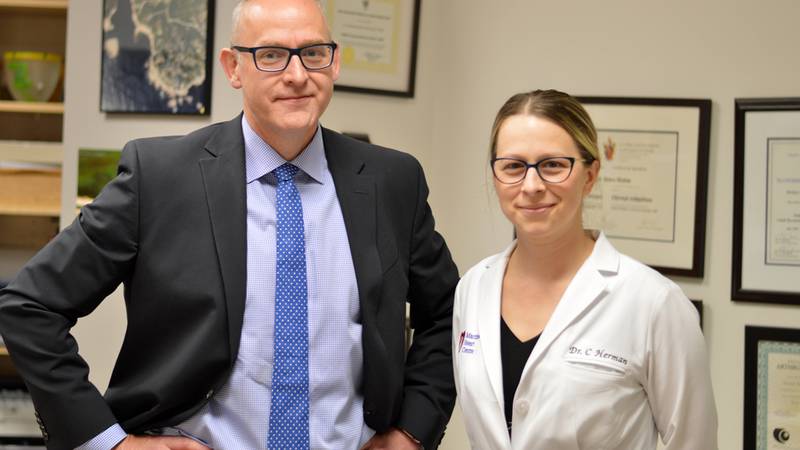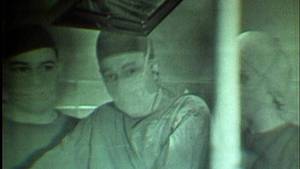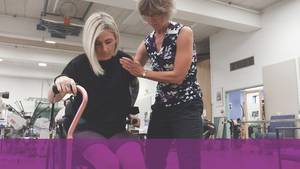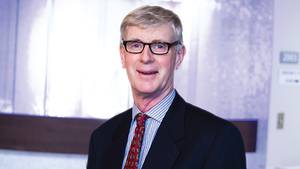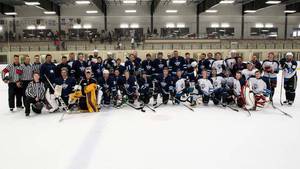Dr. Michael Dunbar, QEII orthopaedic surgeon and QEII Foundation Endowed Chair in Arthroplasty Outcomes, sees patients from across the Maritimes and over the years has noticed an absence.
“I noticed in my practice that I don’t see a lot of First Nations patients,” he says. “The question then becomes, why am I not seeing them?”
Working with data analyst Lynn Lethbridge, Dr. Dunbar used data linking Nova Scotia postal codes to rates of people receiving knee and hip replacements. “We found that on average, rates of access were about half for First Nations populations than for non-First Nations populations,” he says.
To get more detail, he and Lynn worked with Statistics Canada to study by individual province and across Canada. He found a slightly different picture: some places, like B.C. and Labrador, had parity in access. But most of the rest of Canada — including the Maritimes — First Nations peoples access such care at half the rate of others.
“Now we have the proof that there are differences — that my observation was accurate. Now what?” Dr. Dunbar asks.
He theorized it could be that First Nations peoples don’t get diseases like arthritis as much, or they are more resilient or some sort of systemic bias means they are not being referred for surgical consultation. He also wanted to see if his field was an outlier, so he recruited Dr. Christine Herman, QEII cardiac and vascular surgeon. With a $16,000 Maritime Heart Centre Innovation Fund grant from the QEII Foundation, she and Lynn looked at access rates in her field of cardiovascular surgery.
Dr. Herman had also noticed fewer First Nations peoples coming to her, and those who did were in worse shape. The statistics showed when it comes to major heart and vessel problems, First Nations men suffer at a rate 30 per cent higher, and First Nations women 76 per cent higher, than others.
“A lot of the risk factors associated with these diseases are preventable or modifiable. So why is it so high?” Dr. Herman asks. “If you come in with a heart function that’s poor, or you’re so bad you’re short of breath getting up going to the washroom or your diabetes is out of control — that patient has a much higher chance of not surviving surgery or of having a stroke or major infection.”
Dr. Dunbar is working closely with Mi’kmaq Elder Albert Marshall. Elder Marshall is a proponent of Two-Eyed Seeing, an approach combining traditional First Nations knowledge and modern science.
Elder Marshall shared with Dr. Dunbar exercise routines First Nations elders use to stay limber.
“My jaw dropped,” Dr. Dunbar says. “It’s a very advanced exercise program, and it seems to me that it’s based on old knowledge.”
Reached on a beautiful spring day in Eskasoni First Nation, Elder Marshall says often a lone, overworked doctor handles the health of an entire First Nations community, and patients don’t always get referrals for corrective surgery. Why? “This is a very loaded question and it will require very comprehensive exchange of dialogue between the First Nations communities and the physicians,” he says.
Elder Marshall says traditional Mi’kmaq medical wisdom emphasizes the role people can play in healing themselves. “You set yourself into that tone,” he says. “How can we pick up those pieces that have been suppressed for so long and bring them to the present in conjunction with the technology of today? Only then can I see that we would be healthy again.”
He has had hip surgery and now has knee problems, brought on by a lifetime of hard work. Elder Marshall says one traditional way of dealing with suffering is captured in the modern idea of neuroplasticity. “The First Nations healer is exceptionally gifted with identifying and using the medicinal plants, but their greatest gift is to convince me that I have the ability to heal myself.”
Through certain meditations and exercises, he can intercept the pain message from the brain and quiet it. “It’s mind and body working together as a unit,” he says. “The spiritual part is the most important part. Unless the spirit of that plant and your own spirit are functioning as a unit, as one, then that medicine is not going to do anything for you.
“This is what Two-Eyed Seeing is all about: we have to take the best from the both worlds.”
Dr. Dunbar wants the QEII to be a place where that happens. “We can take a national leadership role in understanding the important question of equality of access to care, and by working with leaders like Elder Marshall we may be able to share insights into First Nations knowledge and resilience for the benefit of our entire population.’”
While this study is working toward addressing these disparities that exist for First Nations peoples in the healthcare system, for surgical procedures and beyond, Elder Marshall recognizes there are many reasons for these disparities, making finding solutions a challenge. But measuring differences and communicating those results is an important first step.

